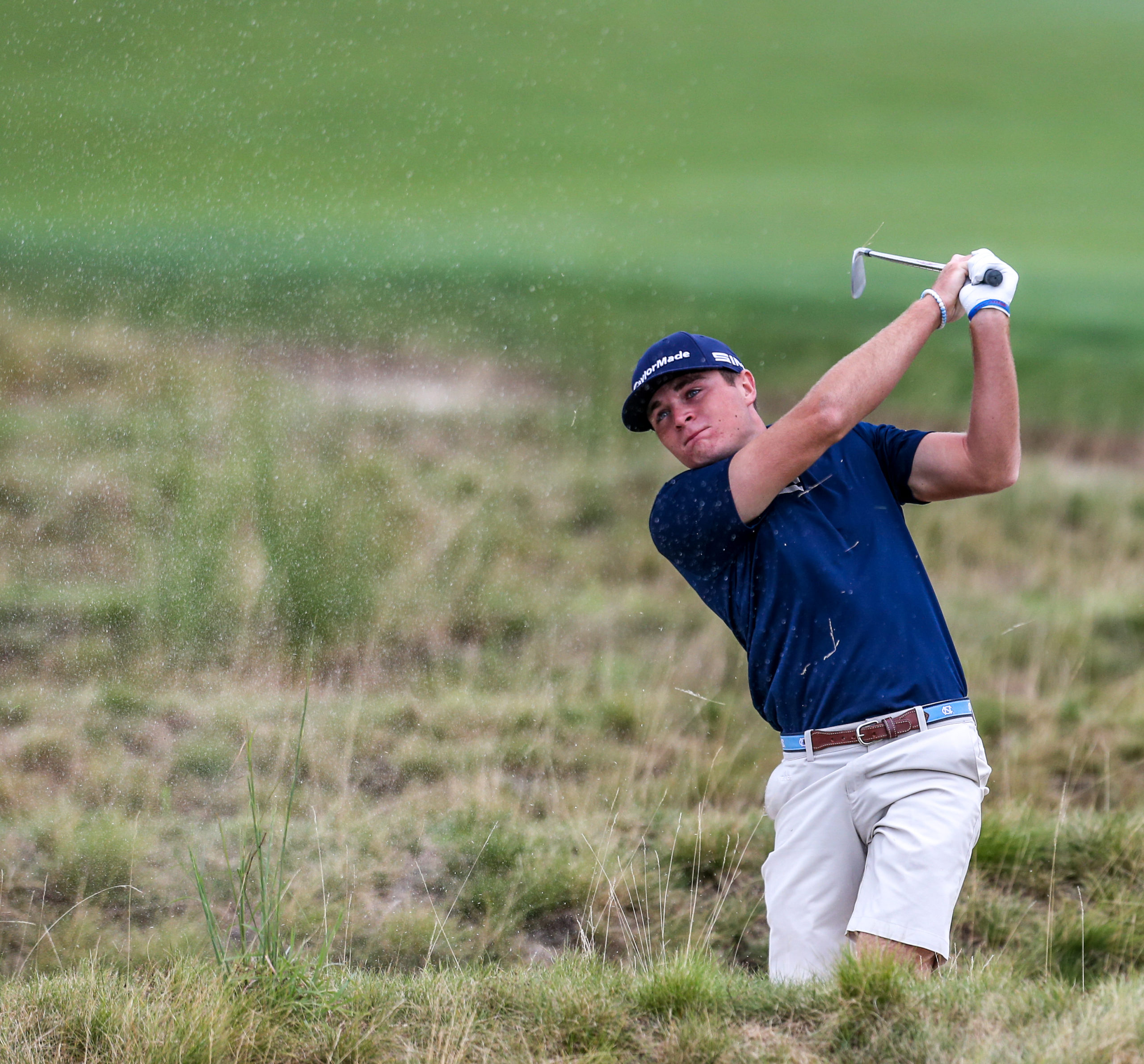News
2021 U.S. AMATEUR: Oakmont Induced Week of Late Wobbles

OAKMONT, Pa. — Oakmont Country Club has a reputation of giving its opponents fits, even when those opponents are the best in the world at what they do.
The course becomes even more difficult when the pressure shines the brightest, evidenced by this chaotic U.S. Amateur week.
Time and time again, golfers maintained steady leads during the tournament’s match-play stretch, and quite often those leads evaporated. For the players that held on, it looked more like a desperate stumble to the finish than a convincing attack.
James Piot, the Michigan State star who took home the coveted trophy on Sunday, summed up the fragility of a lead at this captivating course when he took questions after his historic victory. Piot trailed UNC standout Austin Greaser 3 down after the 27th hole, but rallied for a 2-and-1 victory.
“I knew in the back of my head from leading matches that you’re just not fully comfortable out here when you’re in control,” Piot said. “It’s hard to hold onto a lead unless guys are just really giving shots away.”
If Oakmont taught us anything this week, it’s the rapid pace a round or trend of golf can flip in dramatic fashion.
West Virginia fifth-year and Greensburg native Mark Goetz knows that more than anyone. Goetz has competed at Oakmont on numerous occasions, but the round that he remembered most involved him blowing a six-shot lead on the back nine of the 2018 West Penn Open.
After that setback, Goetz received some sage advice from Oakmont legend Sean Knapp, who told him to “run because you’re scared” when holding a lead.
A day after telling that story and earning medalist honors for the stroke-play portion of the tournament, Goetz blew a 3-up lead by losing the last four holes on the final stretch to Northwestern’s David Nyfjall.
Despite the devastating outcome of the match, Goetz said afterwards that Knapp’s advice remained his mentality the whole back nine.
Knapp’s advice fits so well into the U.S. Amateur because fear is assumed. Most of these players haven’t experienced anywhere near the kind of crowds they saw at the world’s prime amateur event, so you’d think even a collected Tiger Woods felt the pressures during his runs in the mid-1990s.
The fear will remain, so young players would be better to focus on building the lead instead of holding the opponent off. But that’s easier said than done, when Oakmont punishes minuscule mistakes than almost any other golf course in the world.
The matches that remained tight until the end, and there were ridiculous amounts of those this week, players won holes by making pars. In some cases, bogeys proved good enough to halve playoff holes and keep competitors alive.
That’s a concept typically foreign to match play, where aggressive shots are encouraged when you don’t have to worry about one big number ruining a scorecard. The format on paper sets up an expectation for lower scores, not higher.
Aside from Michael Thorbjornsen’s Round of 64 birdie spree, the comebacks at Oakmont this week came from the leaders making mistakes, not the trailers making birdies. Course difficulty surely plays a huge factor in that, but pressure and fatigue have a part as well.
Devon Bling, who suffered a late collapse against Davis Chatfield in the Round of 16, spoke earlier in the week on the intensity that the bracket format provides, something much less prevalent during the tournament’s first two days.
“It’s tiring, it’s grueling,” he said. “You know that’s the way match play is. You got to make putts, got to hit shots. That’s just the way match play is. No other way to describe it.”
Nick Gabrelcik, who knocked out Chatfield later the day, saw his 3-up lead on the back nine collapse before finally winning with a par on 18. He too mentioned his fatigue in the final stretch, even though he didn’t want to use it as an excuse.
“The endurance level is definitely key,” he said. “You got to make sure, especially with the heat, you keep drinking and eating enough. I started to feel a little worn out towards the end there, but I’m not going to say that’s why I played bad.”
Greaser denied a decreased level of comfort during his late fall, saying he just failed to execute down the stretch. But he did mention the course’s increased difficulty as play went on, feeling the tougher conditions made imperfect golf the expectation towards the end.
“I think it firmed up a lot,” he said. “The greens firmed up. As this place get firmer, Oakmont starts to show its teeth more and more. I wouldn’t expect either of us to really have shot under par today.”
But for the newly-crowned U.S. Amateur champion Piot, mental fortitude kept him afloat while others faltered.
Needing to halve the 35th hole to take the title, Pilot looked like another Oakmont victim when he sent his bunker shot into the sand on the opposite side of the 17th green. But a clutch moment followed instead, sinking a 25-foot par putt that would ultimately prove the biggest shot of his entire career.
While many may have counted him out as the match started to slip away at the turn Sunday afternoon, Pilot showed a confidence that the rest of the 312-player field would have to admire.
“Just self-belief. I feel like that’s one of the things, the golfer I am,” he said, referencing other Big 10 tournaments he’s competed in, when grinding out pars becomes more vital to victory than racking up birdies all day. “It was kind of right down my alley as far as the mentality going into the back nine.”













